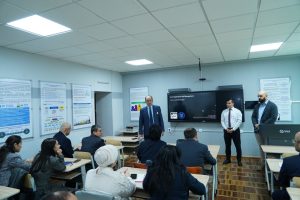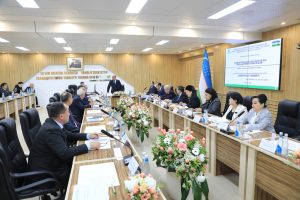
There is a special Interfaculty Research Council at Tashkent State University of Economics (TSUE) which promotes collaboration among different faculties and stimulates interdisciplinary research. The council is responsible for evaluating the number of faculties a project unites, the intersecting areas, and the innovations that emerge through such research.
Interfaculty Research Principles
TSUE has adopted an Interdisciplinary Research Framework. Practically, any research project with the involvement of at least two different fields (e.g., Economics and Information Technology) or two different faculties (e.g., the Faculty of Economics and the Faculty of Business Management) is officially considered “interdisciplinary.”
It typically blends academic learning and practical experience, giving rise to new ideas and methods.
How Are Results Assessed?
Number and Quality of Publications: The number of papers published by collaborating researchers in international journals and their impact factors are scrutinized in detail.
Citation Metrics: Articles with multiple faculties are more cited, indicating their significance and modernday relevance.
Grants and Collaborative Projects: The proportion of state and international research grants allocated to interdisciplinary projects is tracked annually. In 2022, for instance, about 45% of all grants went to such projects.
Innovative Products and Startups: Research ideas are also cultivated in specialized laboratories and centers in order to develop startups, patents, or prototypes, so that they don’t remain theoretical.
Incentives and Support
Incentive for Research Activities: TSUE provides additional grants, nominations, and awards such as “Best Multidisciplinary Project” to teaching staff groups who coauthor publications or develop innovative project ideas.
MultiDisciplinary Laboratories: For example, laboratories like “Digital Economy” and “Business Analytics & Modeling” bring together experts and students from different faculties. This setup helps in tackling economic issues through technological innovations.
Internal and External Collaboration Network
Collaboration with International Universities: TSUE has concluded memoranda of cooperation with European, Asian, and other universities. Interdisciplinary research projects are on the rise within the context of these collaborations.
Business and International Organizations: Collaborations with banks, investment companies, and international organizations like KPMG and EBRD lead to research that addresses real market or social needs.
Monitoring and Evaluation
Annual Report: The Interfaculty Research Council analyzes the outcomes, publications, citations, and innovations achieved each year and presents this report to the university’s governing bodies.
Student Involvement: Undergraduate, master’s, and PhD students are involved in crossfaculty working groups, allowing them to gain handson experience and build their research skills.



